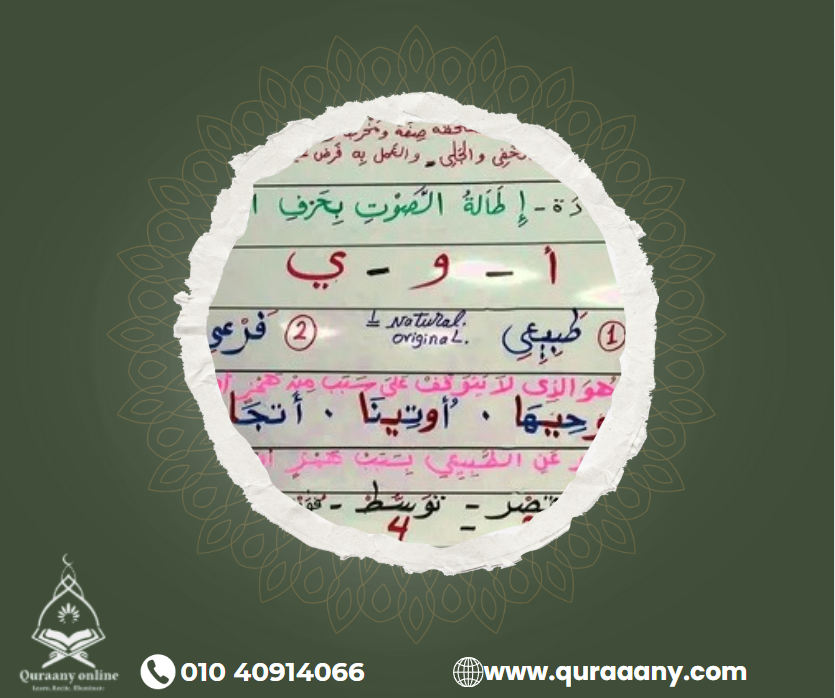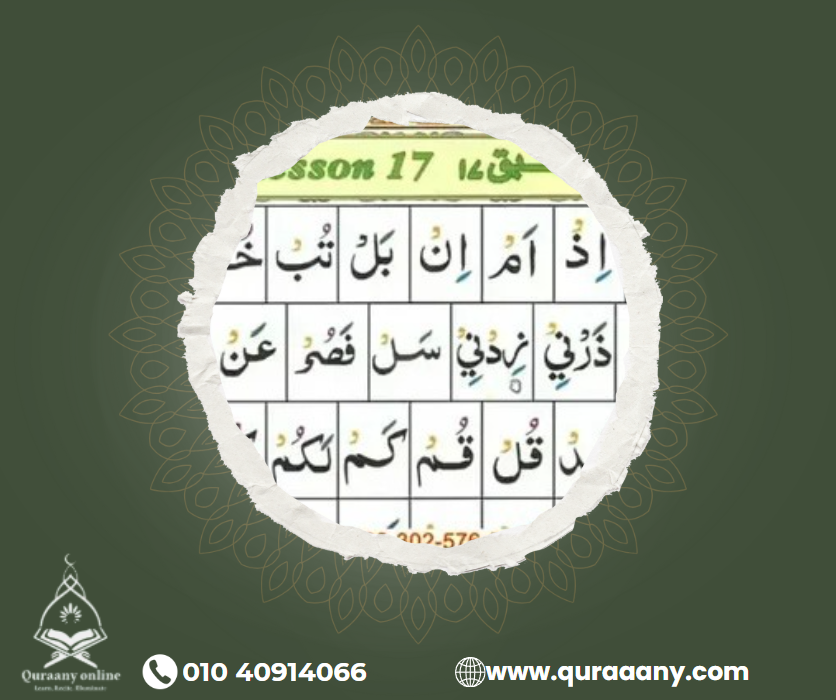- +201040914066
- info@quraaany.com


Tajweed lessons guarantee that the Quran is recited accurately, beautifully, and as the Prophet ﷺ received it. This blog examines the meaning of Tajweed, its significance, and how it strengthens your relationship with the Quran. Learn about its history, basic rules, and how to start your Tajweed journey now.
Tajweed lessons

Linguistically, Tajweed denotes “proficiency” or “doing something well.” When it comes to the Qur’an, it implies that each letter has its rights and qualities when we recite it, and that we abide by the rules that apply to those letters in different situations.
By paying attention to the fundamental traits of every letter that never leaves it, we provide the letters with their rights. And by examining the traits of each letter that are occasionally present and occasionally absent, we give them what they deserve.
Tajweed’s past
Although tajweed lessons are available now, people did not need to Learn Quran With Tajweed Online at the time of the Prophet (PBUH) since they were already conversing in what is now known as Tajweed, therefore, it came naturally to them.
As Islam grew and Arabs began to interact with non-Arabs, errors in reciting the Qur’an began to occur, forcing the scholars to document the guidelines. Even Arabs now need to learn Tajweed since the Arabic they use daily differs greatly from the Classical Arabic used to recite the Qur’an.
read more: Advanced Tajweed Rules: The Most Suitable Place To Study
Why Tajweed Is Used

Every syllable in the Qur’an is from Allah, making it the word of Allah. It is important to take its recitation extremely seriously. The main goal of the Science of Tajweed is to teach the reciter how to recite the Qur’an accurately, without exaggeration or inadequacy, while adhering to the rules and characteristics that apply to each letter.
This allows the reciter to recite the Qur’an in the Prophet’s (PBUH) footsteps, as it came down in the classical Arabic dialect that he acquired from Jibreel, who in turn received it from Allah (SWT).
Each Arabic letter has its own Sifaat, or peculiar qualities, as well as a Makhraj, or exit or articulation point, in the mouth or throat from where it originates. An essential component of Tajweed is being aware of each letter’s Makhraj and Sifaat.
Sometimes the sounds of two letters are so similar that it’s simple to mix them up. Therefore, there is a risk that someone unfamiliar with the characteristics of each letter would misinterpret the meaning of the sentences when reciting the Qur’an.
The reciter can avoid making errors when reciting the Qur’an by adhering to the Tajweed principles.
The fundamentals of Tajweed
Knowing the fundamentals of a science through Tajweed lessons is essential for everyone who wants to Learn To Read Quran Online it to understand it better. A few principles of the science of tajweed must be understood:
-
What do Tajweed lessons mean
By definition in language: Improvement
Applied definition: Giving each letter its rights and dues of features while articulating it from its articulation point. The letters’ rights are their necessary qualities that never go away. The letters’ exhibited qualities, which are sometimes present and occasionally absent, are what make them what they are. For example, the medd, idgham
-
How it was formed
Honorable Hadiths and the words of the Glorious Qur’an, according to some.
-
It’s produce
It protects the tongue from mispronouncing the Glorious Qur’an when reading it.
-
Its importance
Because of its connection to the teachings of Allah, it is regarded as one of the most prestigious and superior disciplines.
read more: Tajweed Course: Your Journey to Perfect Tajweed Begins Now
-
Its creator
The Messenger of Allah (pbuh) is the one who established the rules from a practical standpoint because Allah, the Most High, revealed the Qur’an to him with tajweed. He received instruction on it from the Trustworthy Jibreel, peace be upon him, and taught it to his companions, who in turn taught it to their followers, and so on, until it reached us through these chains.
Scholars of the Qur’anic sciences, like Abu ‘Ubaid Al-Qasim bin Sallaam, are the ones who establish rules from a scientific perspective.
-
Its principle
The application of tajweed is fardh ‘ain, which is necessary for all Muslims (men and women) who have the whole Qur’an or a portion of it memorized, even if only one surah. Knowledge of tajweed is fardh kifayaah, which means that some members of the Muslim community must be aware of it.
-
Rationale for its regulations
Protecting and shielding the Glorious Qur’an from misrepresentation. Following the advent of Islam, Arabs began to interact with non-Arabs, and Muslims were concerned that this might taint the Arabic language.
Then, it became necessary to establish guidelines that would ensure the reader of the Qur’an would be guaranteed to pronounce the words correctly and protect the recitation of the Qur’an from errors.
-
Its tenets
There are four prerequisites for understanding tajweed:
- Awareness of the letters’ articulation points.
- Understanding of the properties of the letters.
- Understanding how the sequence of the letters affects the rules that apply.
- A lot of repetition and tongue exercises.
All of that you will know with Online Tajweed Rules Course and lessons at Quraaany.
What is the number of varieties of Tajweed?

Tajweed, a crucial component of Quranic recitation, guarantees that the text is recited accurately, exquisitely, and with profound reverence. Readers can improve their recitation and strengthen their bond with the Quran by being aware of the variety of tajweed.
Tajweed comes in several important varieties that we will study with our tajweed lessons at Quraaany Academy, such as:
Makhraj (Points of Articulation):
This entails being aware of where each letter should be spoken. Understanding the unique origin of each Arabic letter in the mouth or throat is essential to accurate recitation.
Sifat (Letter Qualities):
This refers to the properties that specify the ideal sound for each letter. These properties include elongation, lightness, and heaviness, which set letters apart from one another.
Madd’s (Elongation) rules:
These guidelines specify how long to hold particular letters when reciting them. Madd comes in several forms, including madd jaiz (permissible extension) and madd lazim (required prolongation).
read more: Is It Easy to Find Tajweed Classes Near Me? Y/N
Ghunnah (Nasalization):
This form of nasal sound, which is associated with particular letters, is a crucial component of tajweed that gives the recitation more depth and resonance.
Idgham (Conjoining):
This rule specifies how some letters are combined to provide a more fluid pronunciation. Idgham can have a big impact on the recitation’s rhythm and flow.
Iqlab:
Iqlab, or conversion, is the process of altering certain sounds when particular letters come after one another. It guarantees that the reciter will continue to pronounce words clearly and precisely.